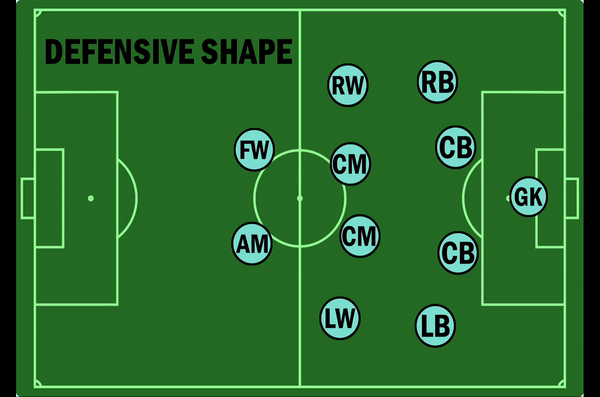Editor's note: This feature is normally only available to paid subscribers, but since this is the first one of the season we're making it free to all members. We hope you'll consider becoming a paid member.
The typical MLS season is always good for at least one injury crisis. As Seattle faces a second game without four key starters, the stage is set for newcomer Pedro de la Vega to add an essential boost of excitement and quality in his home debut. Austin FC comes to town after a dispiriting home loss that had one former Sounder questioning the team’s mentality. Their squad will look to last season’s 2-1 win at Lumen Field for inspiration against a Seattle side intent on entertaining their home fans.
Let’s look at how Seattle is setting up tactically in 2024, and how they can tackle Austin despite early injuries.
A quick tactical review
The Sounders kept their base tactics from 2023 and dedicated a large part of preseason to adding complexity and unpredictability to their attacking movements. Seattle's goal in the attack is to spread out across the width of the field, occupy spaces between defenders, and break teams down with the ball. The team's organized possession shape is also part of their defensive philosophy: holding onto the ball provides time to get positionally organized, preventing opposition counterattacks when the ball is lost. Out of possession, Brian Schmetzer preaches active defending, where every outfield player is expected to be active and organized with applying pressure or cutting off passing lanes.
While the team’s typical 4-2-3-1 formation appears on the screen before a match, this is a rather poor way of describing how the team plays. To borrow an aphorism, “all formation graphics are wrong, but some are useful.” The Sounders’ shapes more commonly resemble something like the graphic below:

While defending, a 4-4-2 shape is most common, with an attacking midfielder (Albert Rusnák) joining the forward (Jordan Morris). As the team transitions to the attack, the right back (Alex Roldan) goes forward to provide width on the right wing. The right winger (Cristian Roldan) drifts inside as a second central attacking midfielder as the right back overlaps him. The back line takes shape as the left back (Nouhou) moves centrally to form a back three with the left centerback (Jackson Ragen) positioned centrally and the right centerback (Yeimar) shifting to the right. The left winger (Léo Chú) goes forward to provide width on the left. The central midfielders push forward, often with one (João Paulo) hanging back to receive the ball from the back line while the other (Josh Atencio) finds gaps between defenders. As the forward leads the attacking line in the middle, the attacking midfielder can drift left and provide service for the left winger.
Before we get too caught up in formations, it is important to note that these are just basic shapes. The team will often look quite different at any given moment. Additional Sounders attackers may move forward to the edge of the box to put pressure on an opponent passing out of the back. Seattle’s back line will spread out into a back four to provide extra width when building out of the back against a high pressing opponent. Players have the flexibility to trade spaces and make attacking runs as they see fit. Formations compress and rotate when the ball moves to the sidelines.
In general, though, the formation is set up to get the best out of Seattle’s starting talent. Alex Roldan’s attacking prowess and connection with his brother are magnified by pushing the right back high up the field. Cristian Roldan’s talents as a creative passer and direct attacking runner shine in his hybrid winger role. Nouhou’s defensive ability is amplified by shifting him to a left centerback position in possession while limiting his impact on the attack. Chú finds space to showcase his speed while wide on the left.
How might the team’s attacking shape change as the year progresses? Answering that question depends a lot on de la Vega. If the Sounders’ new DP proves to be too good to keep out of any starting lineup, Schmetzer may have to reevaluate his setup. While Chú’s touchline-hugging role on the left wing provides width, de la Vega is more apt to cut inside on his preferred right foot and drift centrally to receive the ball. An attack-minded left back option who can overlap de la Vega on the left wing may better complement his skillset. Might Schmetzer be willing to select an attacking player like Reed Baker-Whiting at left back over a veteran like Nouhou?
Playing de la Vega on the right wing or in the central attacking role would displace a healthy Cristian Roldan or Rusnák. Would Schmetzer be willing to move one of those veterans, perhaps to compete with Atencio in central midfield, in an ideal starting eleven? The team’s ideal starters first need to all be healthy and available before any of these questions become too pressing.









